Dr. Phil Zeltzman’s Blog
How Nestle’s leg almost got amputated
Nestle, a 6 year old pit bull, started limping on her left hind leg. Her owner took her to her family vet to figure out what was wrong.
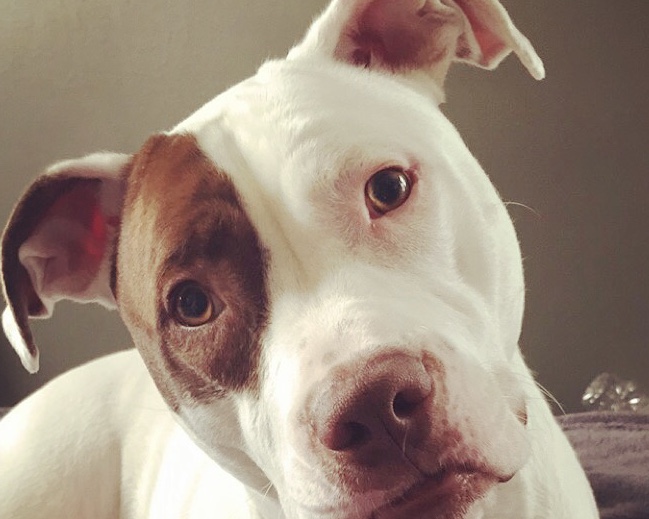
The vet took one X-ray of the leg and gave the owner some devastating news: Nestle had bone cancer – most likely osteosarcoma. He recommended that she been seen by a surgeon to discuss what options were available.
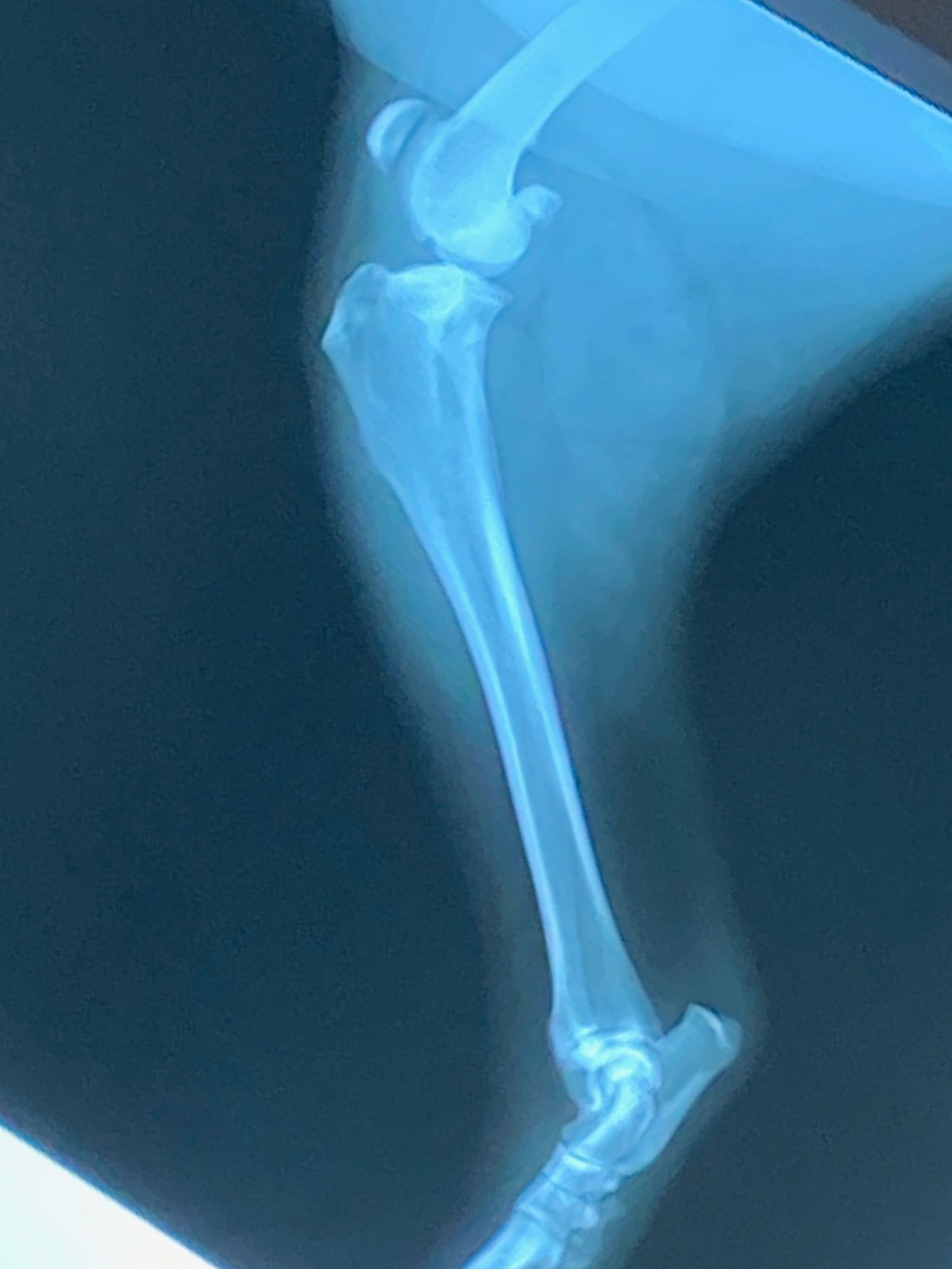
Nestle’s dedicated owner immediately took her to see the surgeon. He reviewed the X-ray taken by the family vet and agreed with the diagnosis. Then he recommended to take her to surgery right away to have her leg amputated. Amputation is indeed the standard of care for bone cancer.
But Nestle’s owner didn’t feel right about the whole situation. He couldn’t explain it. It just didn’t sit right with him. “I knew we had to get a second opinion. When I looked at Nestle, something just told me I wasn’t getting the most accurate information.”
Trusting his gut, he reached out to me for a second opinion about his dog’s unfortunate situation. I asked him to send me the X-ray his vet had taken for me to review. After looking it over thoroughly, and with all due respect, I didn’t see anything convincing on the X-ray.
That put me in a diplomatically tricky position…
I told him that I would not feel comfortable amputating Nestle based on that X-ray only.
Instead, I recommended doing a full “workup” – by the book.
X-rays of the bone in question, in addition to the knees and the hips to be thorough. I also recommended chest X-rays since bone cancer readily spreads to the lungs. And full blood work for good measure, to make sure Nestle was a good candidate for anesthesia.
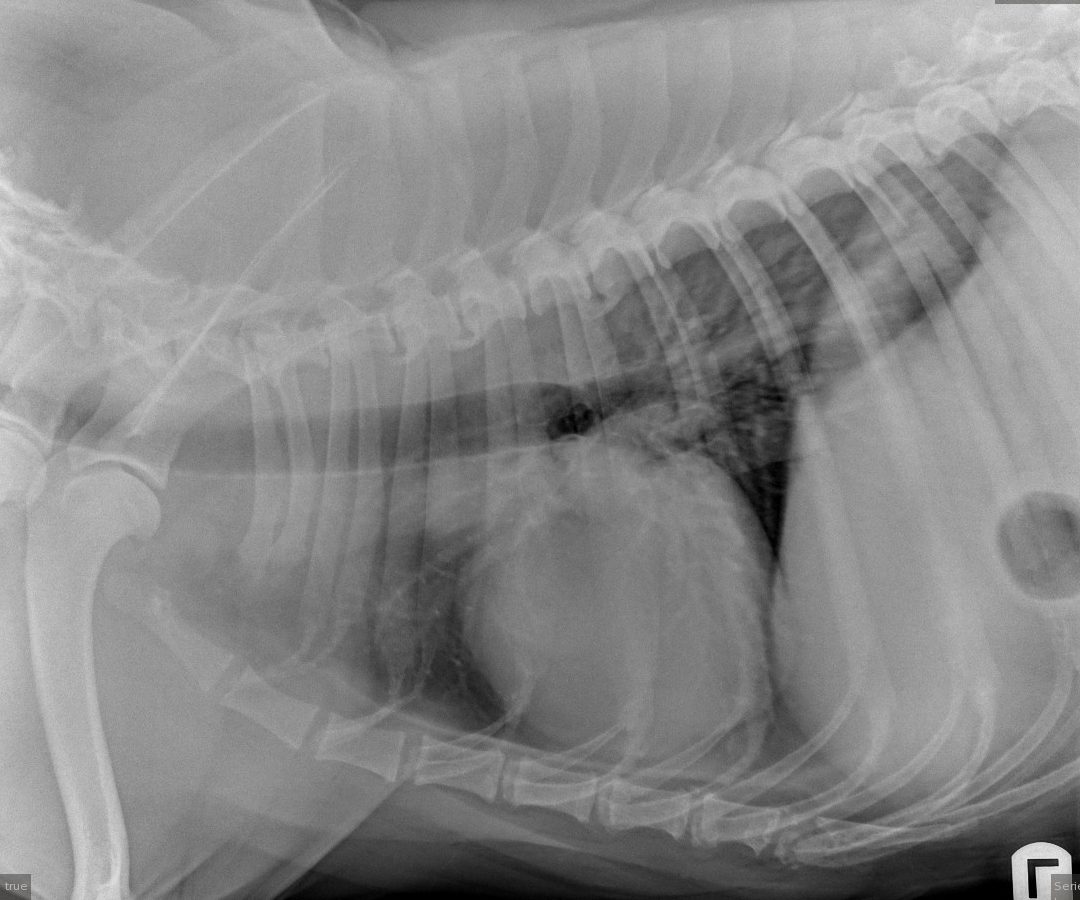
That was a big leap of faith, and a significant expense, but Nestle’s owner trusted me enough to follow my advice.
Once I received the X-rays from the clinic I referred him to, there was no question in my mind. Nestle did not have bone cancer. To be extra safe, I even emailed the X-rays to several surgeon friends. They all agreed with my opinion: no sign of bone cancer.
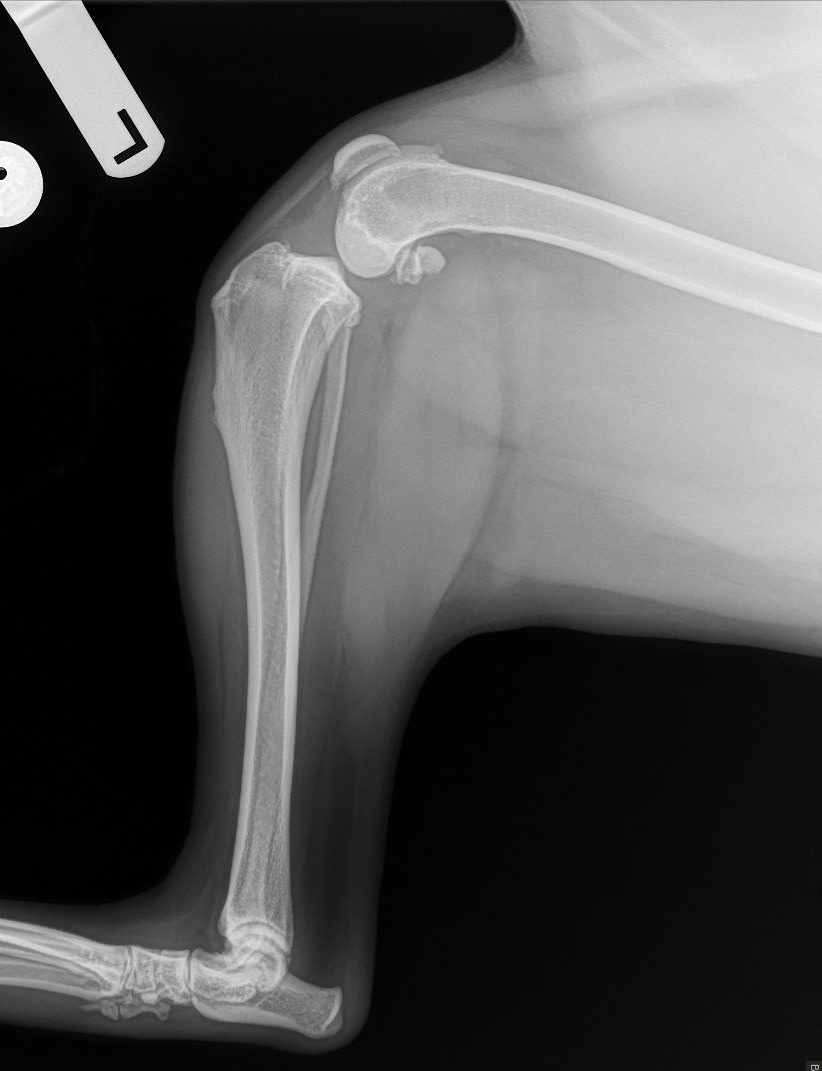
So what did Nestle have? A torn ACL.
Rather than an amputation, she needed a TPLO (Tibial Plateau Leveling Osteotomy).
Both happy and a bit uneasy (i.e. going against a family vet’s and another surgeon’s opinion), I delivered the news to Nestle’s owner. He was beyond grateful for the amazing news.
Can you imagine the emotional roller coaster?
We set up surgery for her TPLO procedure the following week. She had a successful surgery and recovered uneventfully.
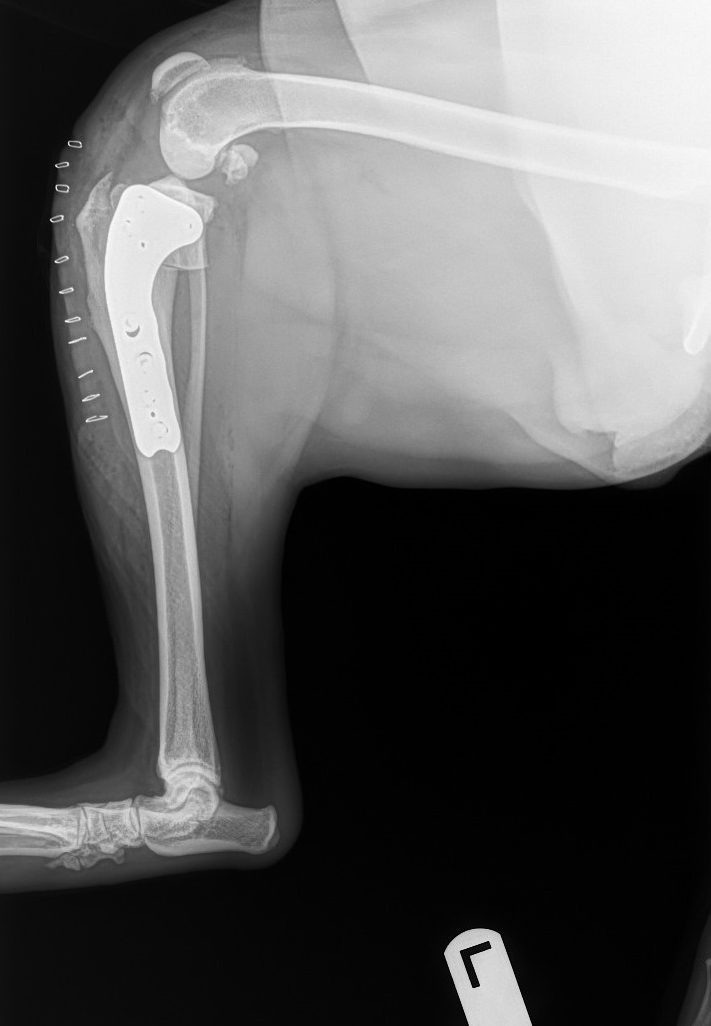
The owner and his family were so happy. They were relieved that they trusted their gut and pursued a second opinion for their dog.
What’s the moral of the story? My point is certainly not to pretend that I am smarter than the other surgeon.
Here are a few points to never forget if you get in a similar situation:
. A thorough vet will always do specific things rather than cut corners. For example, we almost always need “2 views” or 2 X-rays, to get a better idea of the anatomy in 3D: one from the front and one from the side. Nestle’s vet, with all due respect, only took a view from the side. I always ask for “2 views” of the bone.
. When cancer is suspected, we usually take chest X-rays to make sure the cancer hasn’t spread to the lung (I say usually because in some cases we need to look inside the belly for spreading). Can you imagine amputating a dog’s leg, and then later realizing that the lungs are full of metastasis?
Incidentally, a thorough vet will take not 2 but 3 views of the chest: one of the front, and one from each side. Again, don’t cut corners.
. And of course, we always perform full blood work before putting a patient under anesthesia, to ensure they are a good candidate, ie internal organs such as the kidneys and the liver, are healthy enough.
. And here is my final and most important point: whenever something doesn’t seem or feel right about a practice, a vet or a treatment recommendation, you should trust your gut. It is your absolute right to get a second opinion if you aren’t comfortable.
You should never feel embarrassed or ashamed to seek a second opinion. You need to be your pet’s best advocate.
The diagnosis and the outcome may not be any different, but at least you can rest assured that you will make the best possible decision for your pet.
“The initial thought of losing Nestle to bone cancer absolutely crushed my family and I. Nestle is a rescue & since the day I rescued her, I vowed to do everything in my power to keep her safe and comfortable throughout her life after a rough beginning. After her initial diagnosis, I felt like I had failed her. But there was something about Nestle’s demeanor, I can’t explain it, I knew there was more to the initial diagnosis. And I knew I wanted a second opinion, especially after such a serious diagnosis.”
And he concludes:
“Without a doubt, Dr. Zeltzman and the staff at the clinic changed Nestle‘s life for the absolute best, and they gave me back my best friend when I thought I’d lost her for good.”
Phil Zeltzman, DVM, DACVS, CVJ, Fear Free certified

Dr. Phil Zeltzman is a traveling veterinary surgeon in Pennsylvania & New Jersey. An award-winning author, he loves to share his adventures in practice along with information about vet medicine and surgery that can really help your pets. Dr. Zeltzman specializes in orthopedic, neurologic, cancer, and soft tissue surgeries for dogs, cats, and small exotics. By working with local family vets, he offers the best surgical care, safest anesthesia, and utmost pain management to all his patients. Sign up to get an email when he updates his blog, and follow him on Facebook, too!
Luna, a happy ending despite an agonizing decision to amputate
Luna, an 11 year old shepherd mix, had a large mass (larger than a golf ball) between her toes in the left front leg.
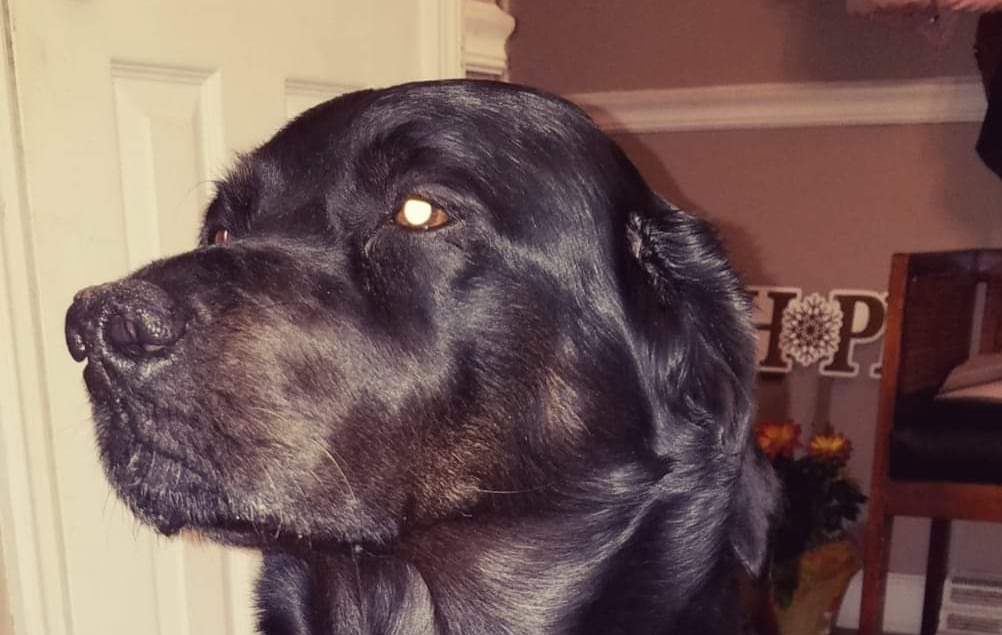
WARNING – WHAT FOLLOWS IS GRAPHIC – YOU HAVE BEEN WARNED.
Actually, the mass got much smaller suddenly, after she literally chewed up half of it. That left a large open wound, which got infected, and caused a horrible smell.
Luna was limping because of the severe pain this mass caused.
Her family vet did a needle test (“fine needle aspirate”), which came back normal or as we say “inconclusive”. So there was nothing to worry about right? It was likely a benign mass after all.
Amputation was mentioned, but Luna’s loving owner could not accept the idea. She thought it was a horrible idea and Luna would be miserable. She found me through my website, reached out to me, and we had a little heart to heart. I explained my concern that this was not a benign mass at all, and that amputation was the only reasonable option.
After agonizing over this difficult decision, Luna’s owner eventually agreed to do the right thing for her beloved dog and scheduled the amputation.
But first, we needed to take chest X-rays, because the cancer I suspected typically spreads quickly to the lungs. Fortunately, no spreading was visible at that point.
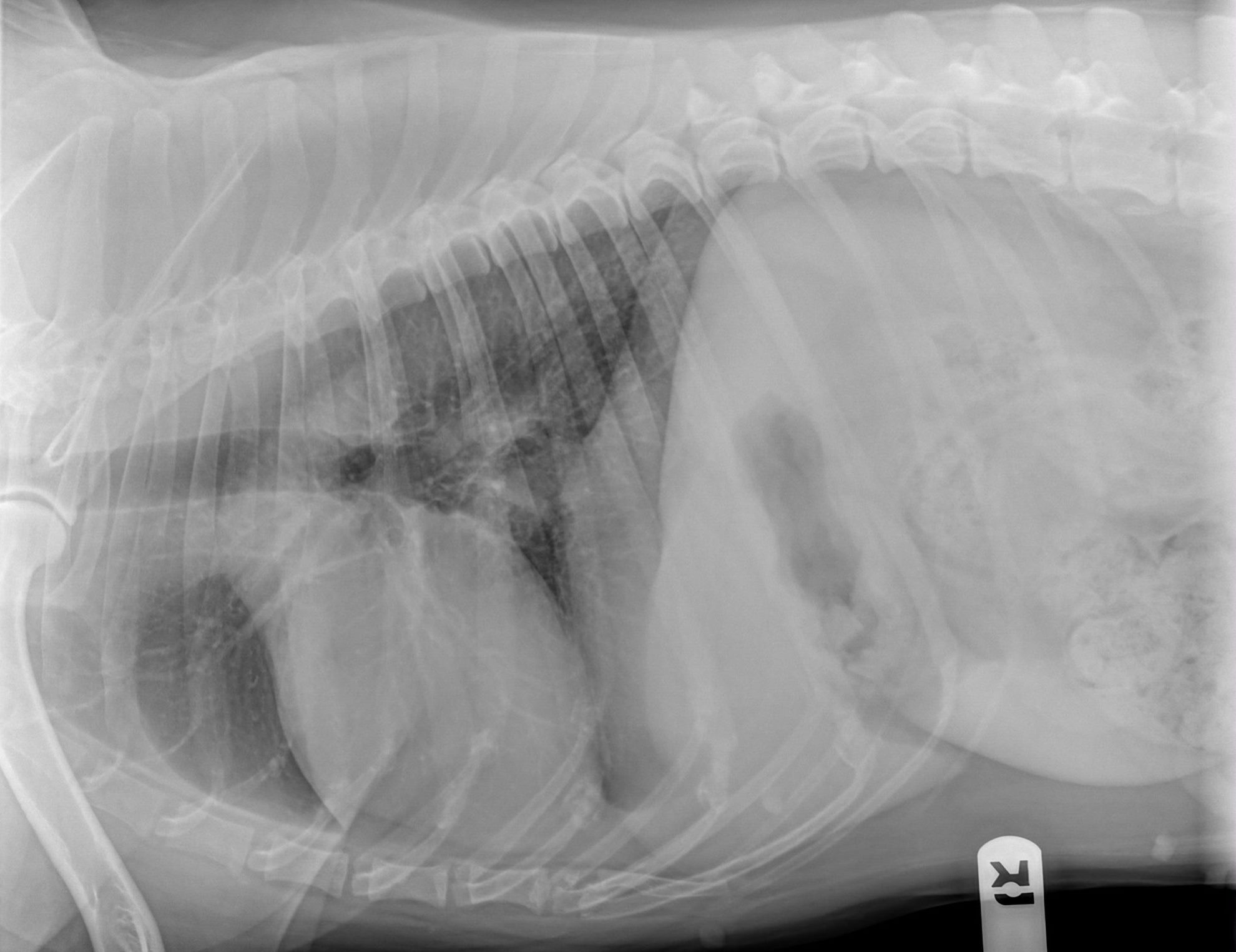
We performed the amputation (let’s call it day 1) and surgery went smoothly. Luna went home that night – walking. Below is a summary of what happened after surgery, to give you a feel for the emotional roller-coaster Luna’s owner went through.
Day 1: surgery was performed. Luna went home and had a rough first night. Of course, Luna’s owner questioned her decision.
Day 2: I recommended adding a third pain medication.
Day 3: One of my nurses called to check in. Luna felt much better already.
Day 5: Luna’s owner wrote: “Hi Dr. Zeltzman, she seems to be doing great so far. She’s acting more like herself each day. She’s just sad she can’t get on the couch or bed.”
Day 6: The biopsy results came back. The news was not good. As expected, the mass was indeed cancerous. It’s called malignant melanoma.
In spite of the bad news, Luna’s owner was relieved that her dog was finally out of pain. She wrote: “Thanks again. We can’t thank you enough for the amazing work you did to her!”
Day 28: Four weeks after surgery, Luna’s owner wrote: “Hi Dr Zeltzman. Just wanted to thank you again for the wonderful care you gave to Luna. She is doing wonderful and living a happy pain free life. I wanted to share a picture of her because she looks so beautiful and happy!”
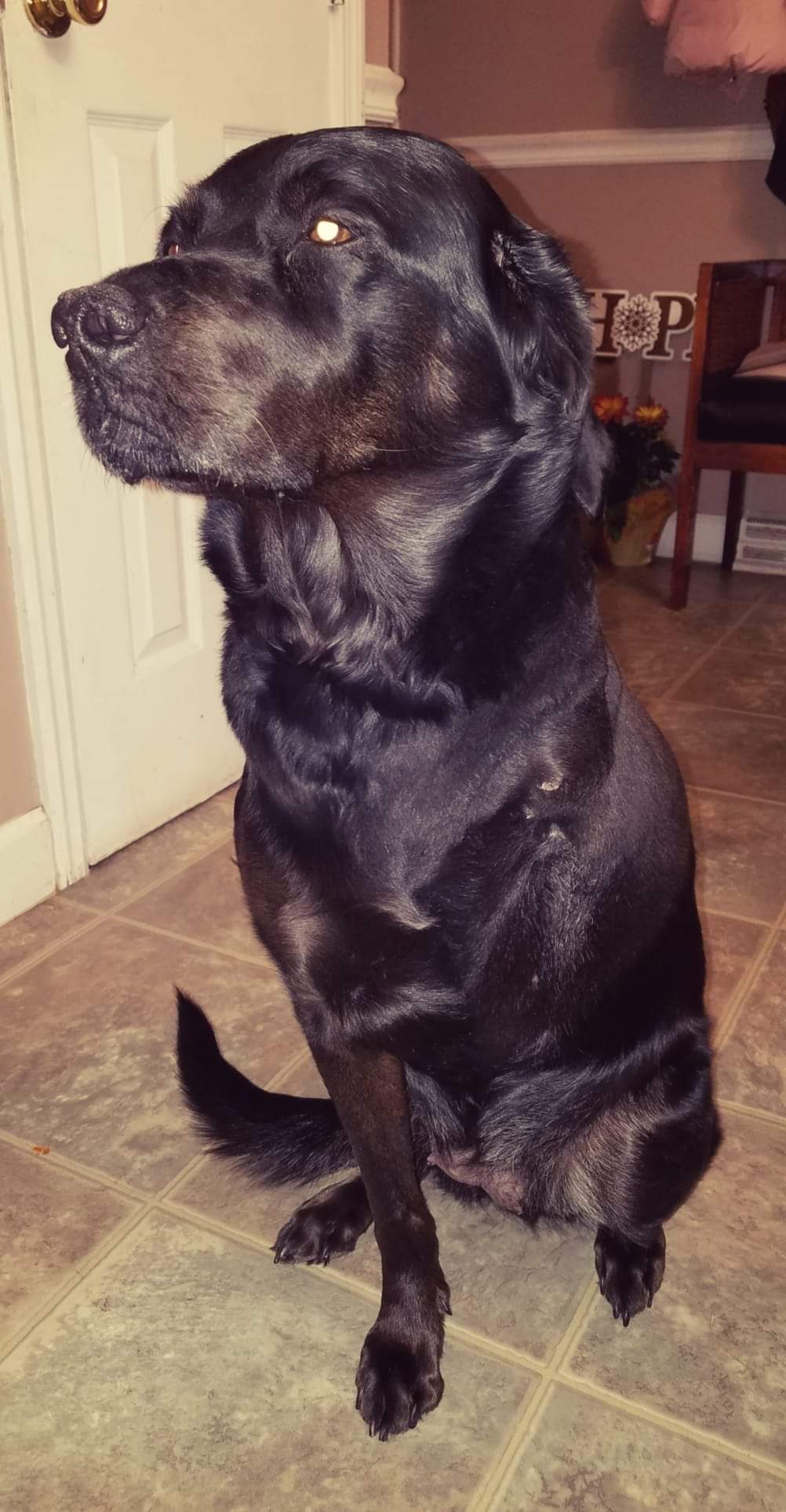
So what is the purpose of this blog? I’m not sharing this story to brag. And I am not here to try to convince you that amputation is a wonderful thing and a walk in the park (no pun intended) .
What I would like pet lovers to believe is that when we recommend sacrificing a leg, it’s never for fun. It’s always to help a cat or a dog feel better, once the source of the pain is removed.
The biggest obstacle is most often in the pet owner’s mind. They are often terrified that amputation is cruel. I suspect that, subconsciously, they think of themselves as an amputee, walking on one leg. Well, remember, pets walk on 3 legs after amputation and they adapt very well. And typically, they start walking a few hours after surgery!
Pets don’t even know they’re missing a leg, all they know if that they don’t feel the pain anymore.
In Luna’s owner’s own words: “She is doing wonderful and living a happy pain free life.”
Phil Zeltzman, DVM, DACVS, CVJ, Fear Free Certified

Dr. Phil Zeltzman is a traveling veterinary surgeon in Pennsylvania & New Jersey. An award-winning author, he loves to share his adventures in practice along with information about vet medicine and surgery that can really help your pets. Dr. Zeltzman specializes in orthopedic, neurologic, cancer, and soft tissue surgeries for dogs, cats, and small exotics. By working with local family vets, he offers the best surgical care, safest anesthesia, and utmost pain management to all his patients. Sign up to get an email when he updates his blog, and follow him on Facebook, too!
Lucy becomes an amputee
Lucy, a sweet 6 year old Golden, started limping in her left back leg.

Her family vet’s X-rays showed that something, most likely bone cancer, was eating her thigh bone away (femur). The blue arrow shows normal bone; the red arrow shows bone that has been either eaten away or that has created a mass.
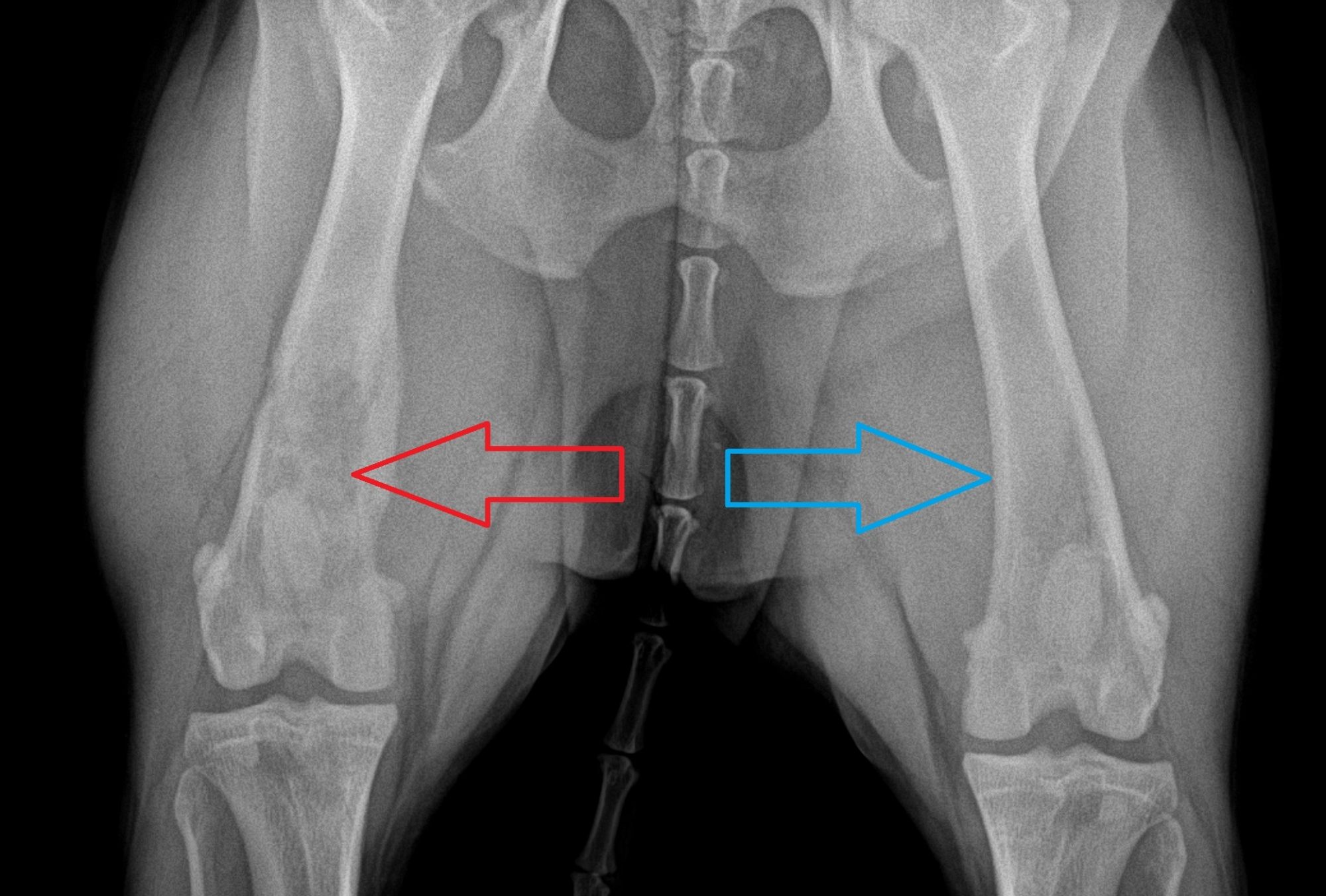
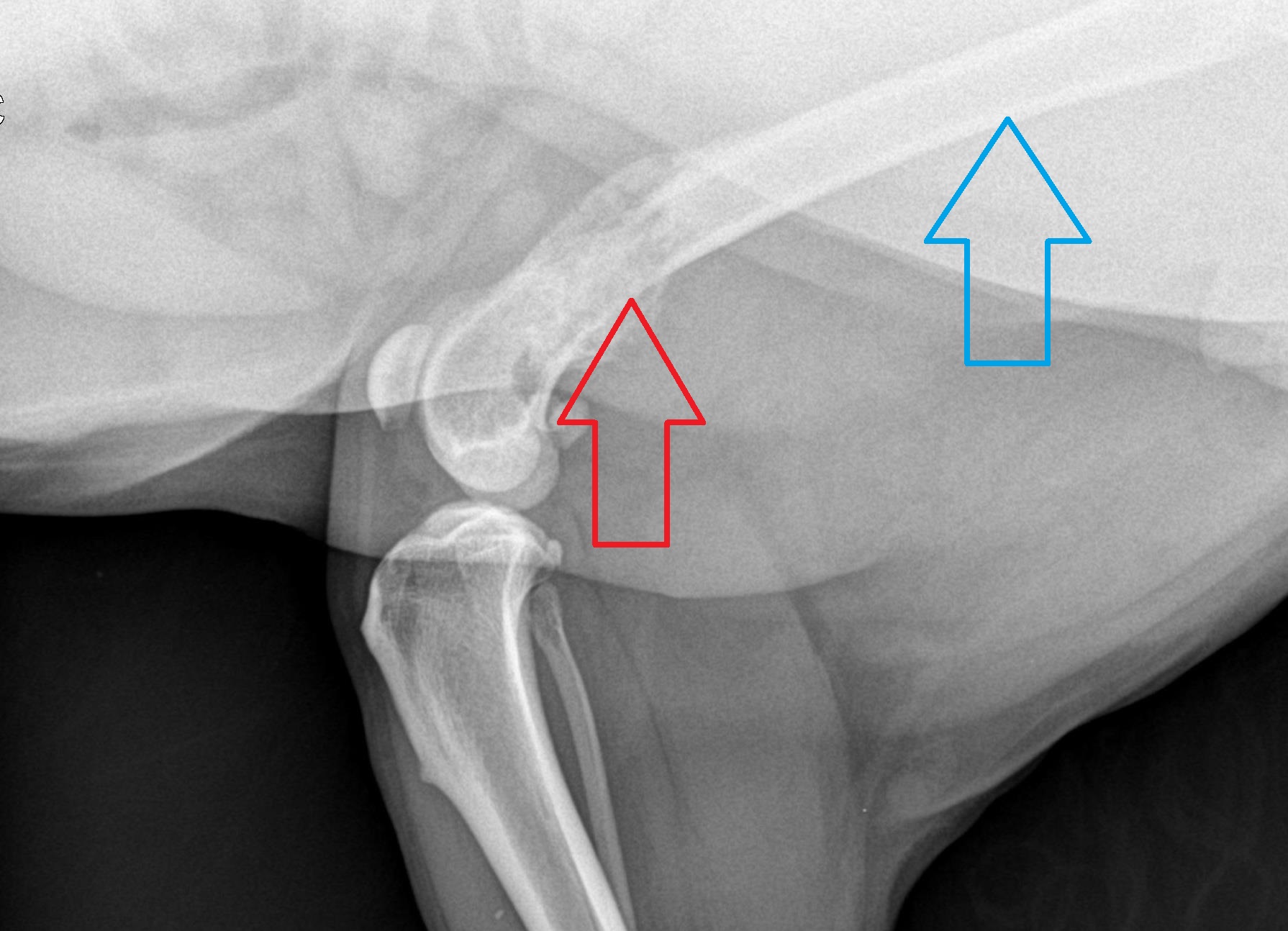
There weren’t a whole lot of options: the best course of action was to sacrifice the leg. Before that, we ensured that her blood work was normal and that chest X-rays did not show any spreading of the (presumed) cancer to the lungs.
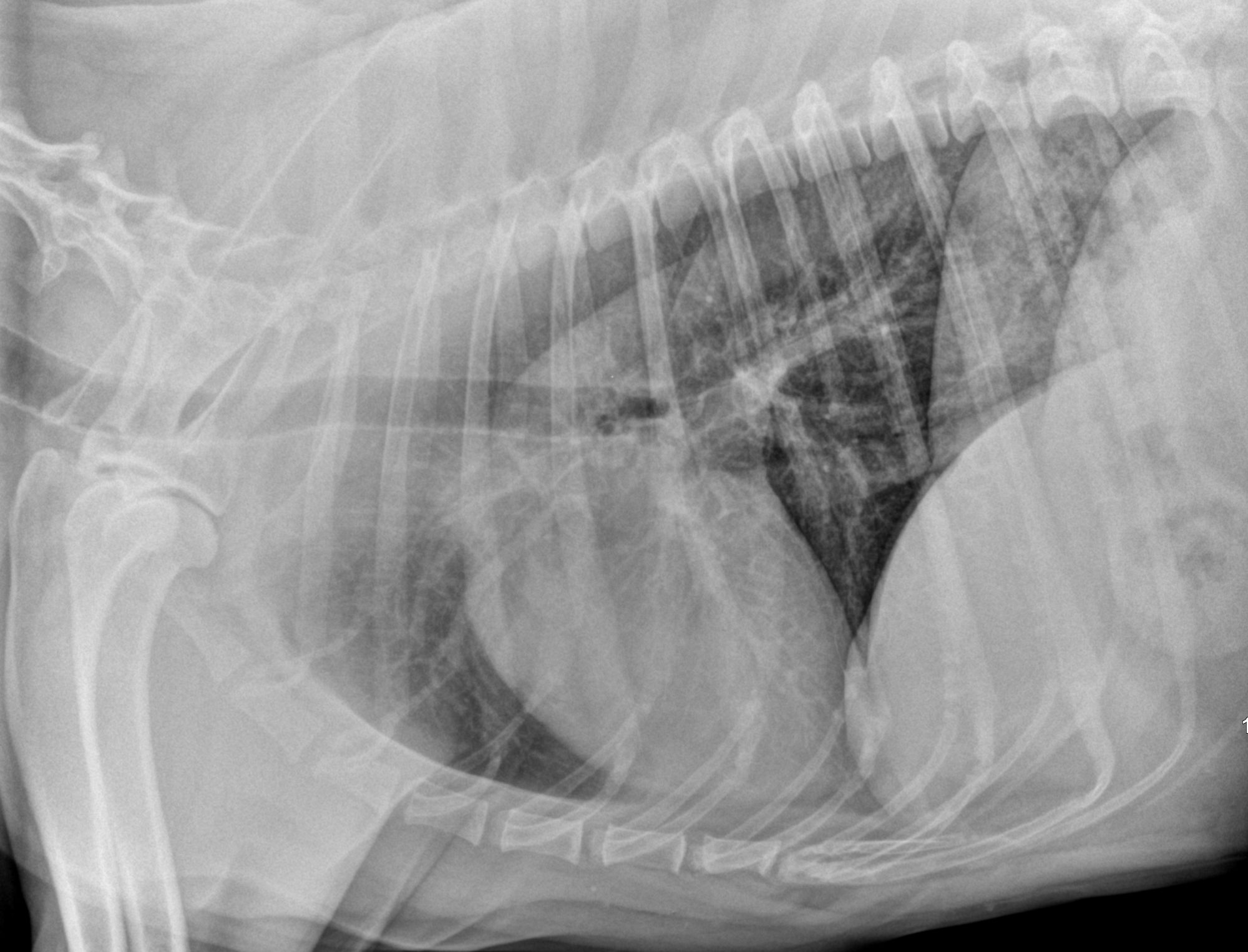
A few days later, I traveled to the practice to perform the amputation. Everything went well in surgery.
The very next day, Lucy started to walk around on 3 legs. She was comfortable and started to eat nicely.
A week later, the biopsy confirmed the suspicion of bone cancer (osteosarcoma). The next step was to discuss chemotherapy, which is recommended in the case of bone cancer.
With amputation alone for confirmed osteosarcoma, the average survival is 3 to 6 months. With amputation and chemotherapy, we hope for an average survival of at least one year. When we recommend treatment, our goal is more about quality of life than quantity of life (aka survival time).
Amputation is typically needed because of severe trauma or cancer – most often bone cancer. No pet owner ever opens a bottle of champagne when their pet needs a leg amputation. Yet it’s very important to understand and believe that virtually 100% of dogs and cats do great on 3 legs. My most surprising patient, Gator, was able to swim in the pool with 3 legs (and a life jacket).
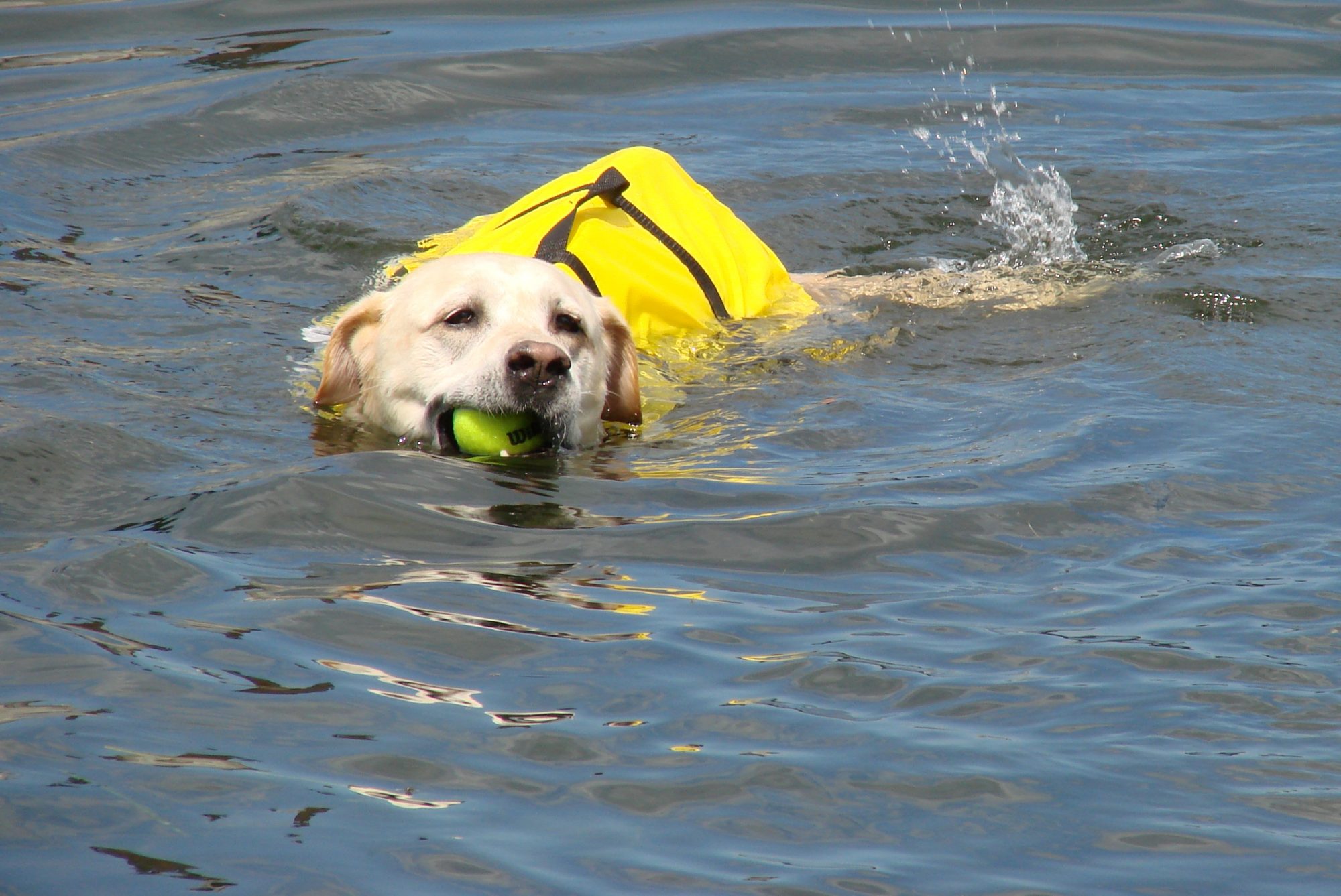
To this day, I have never met a client who has told me that they regretted their decision to amputate their pet. As long as we are on the same page, and we all decide as the pet’s best advocates, we typically get good results, regardless of the amount of time left.
In other words, we would rather have 3, 6 or 12 months of quality life, than 3 years of misery.
Phil Zeltzman, DVM, DACVS, CVJ, Fear Free Certified

Dr. Phil Zeltzman is a traveling veterinary surgeon in Pennsylvania & New Jersey. An award-winning author, he loves to share his adventures in practice along with information about vet medicine and surgery that can really help your pets. Dr. Zeltzman specializes in orthopedic, neurologic, cancer, and soft tissue surgeries for dogs, cats, and small exotics. By working with local family vets, he offers the best surgical care, safest anesthesia, and utmost pain management to all his patients. Sign up to get an email when he updates his blog, and follow him on Facebook, too!
Why you shouldn’t be afraid of a leg amputation
Lucy, a sweet 6 year old Golden, started limping in her left back leg. Her family vet’s X-rays showed that something, most likely bone cancer, was eating her thigh bone (femur) away (see red arrows).


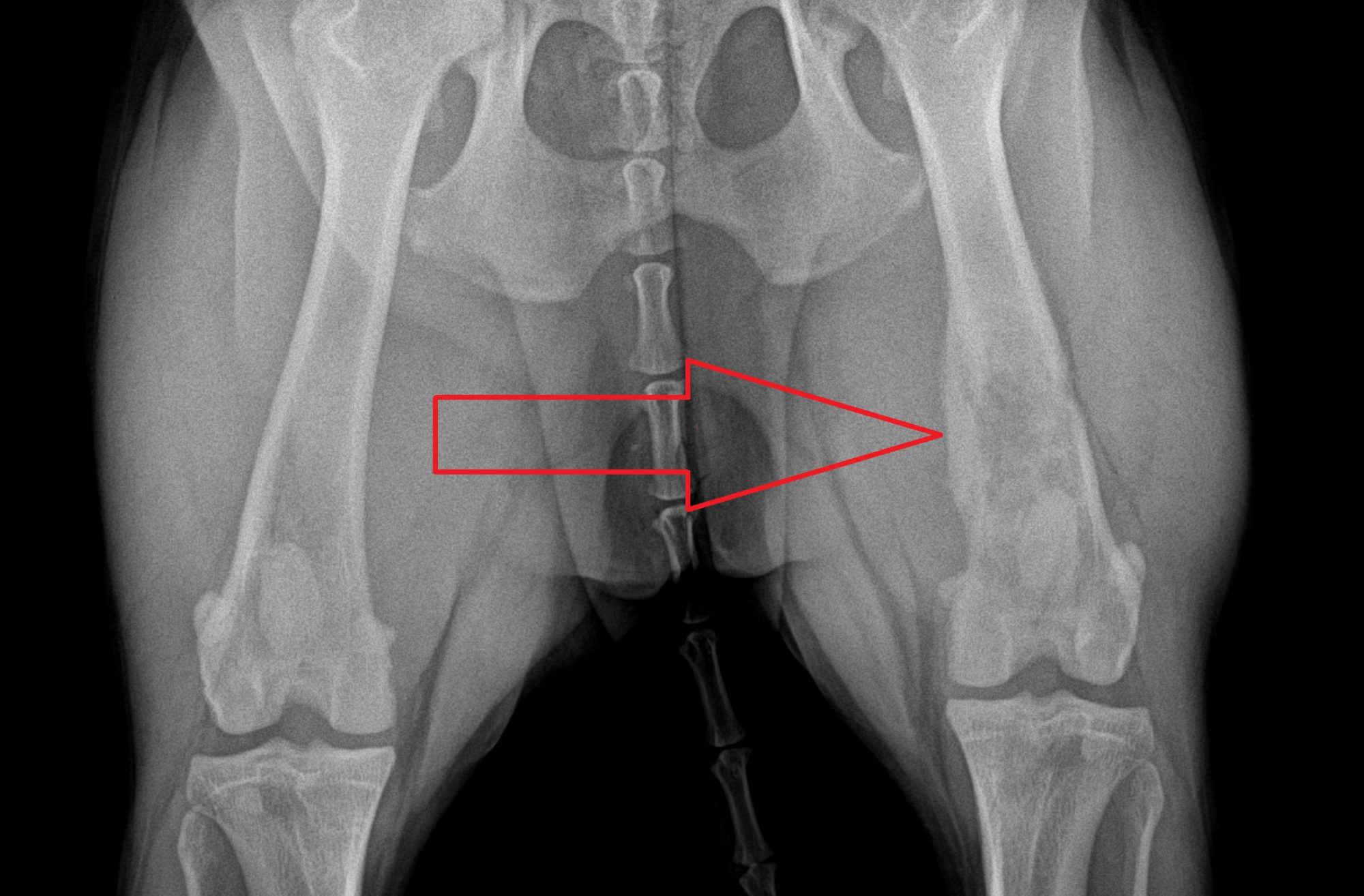
There weren’t a whole lot of options: the best course of action was to sacrifice the leg. Before that, we ensured that her blood work was normal and that chest X-rays did not show any spreading of the (presumed) cancer to the lungs.
A few days later, I traveled to the practice to perform the amputation. Everything went well in surgery.
The very next day, Lucy started to walk around on 3 legs. She was comfortable and started to eat nicely.
A week later, the biopsy confirmed the suspicion of bone cancer (osteosarcoma). The next step was to discuss chemotherapy, which is recommended in the case of bone cancer.
With amputation alone for confirmed osteosarcoma, the average survival is 3 to 6 months. With amputation and chemotherapy, we hope for an average survival of at least one year. When we recommend treatment, our goal is more about quality of life than quantity of life (aka survival time).
Amputation is typically needed because of severe trauma or cancer – most often bone cancer. No pet owner ever opens a bottle of champagne when their pet needs a leg amputation. Yet it’s very important to understand and believe that virtually 100% of dogs and all cats do great on 3 legs. My most surprising patient, Gator, was able to swim in the pool with 3 legs (and a life jacket).
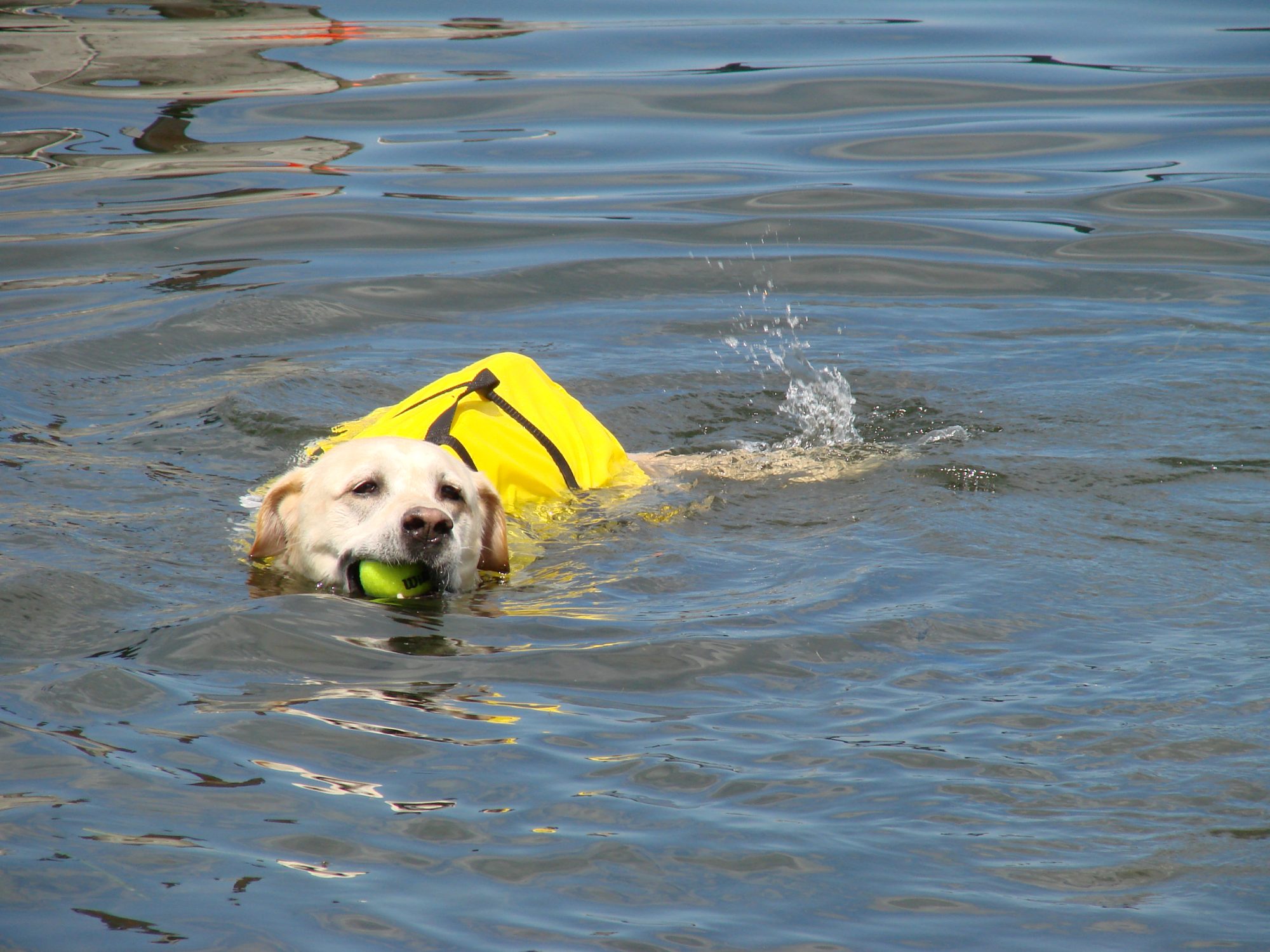
To this day, I have never met a client who has told me that they regretted their decision to amputate their pet. As long as we are on the same page, and we all decide as the pet’s advocate, we typically get good results, regardless of the amount of time left.
In other words, we would rather have 3, 6 or 12 months of quality life, than 3 years of misery.

Dr. Phil Zeltzman is a traveling veterinary surgeon in Pennsylvania & New Jersey. An award-winning author, he loves to share his adventures in practice along with information about vet medicine and surgery that can really help your pets. Dr. Zeltzman specializes in orthopedic, neurologic, cancer, and soft tissue surgeries for dogs, cats, and small exotics. By working with local family vets, he offers the best surgical care, safest anesthesia, and utmost pain management to all his patients. Sign up to get an email when he updates his blog, and follow him on Facebook, too!

